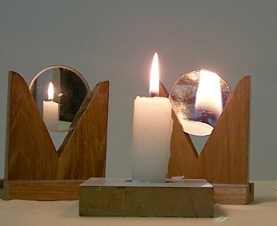Students investigate the real and virtual images formed by concave and convex lenses. The method of parallax to locate images is first developed using real images formed by a convex lens and then proven to be true by projecting the images onto a screen. The position of the object is changed and the effect on the nature, position, size and orientation is investigated. Parallax is then used to locate virtual images formed by convex and concave lenses.
What you need ?
10 cm focal length convex lens and lens holder, 10 cm focal length concave lens, Candle and screen, A block of wood with a large thick nail that protrudes above the lens when in the holder or the base and stem of 50 g slotted masses
We've tried the other day and it showed that when using the concave lens, the image can be clearly seen on the screen and with the same size but when with convex, the image is magnified.




